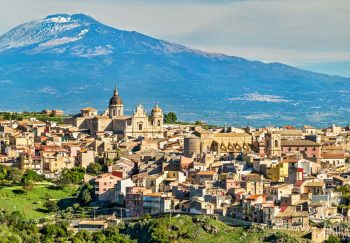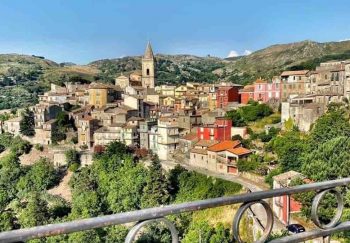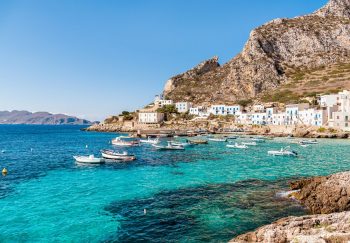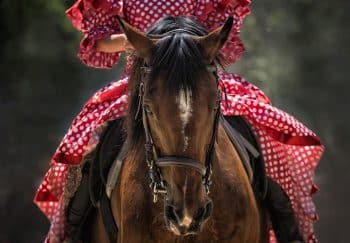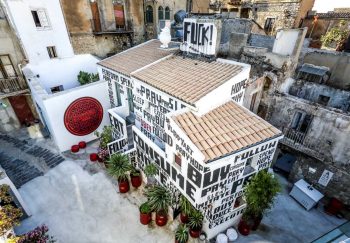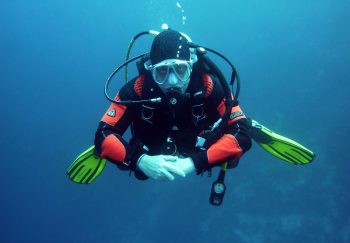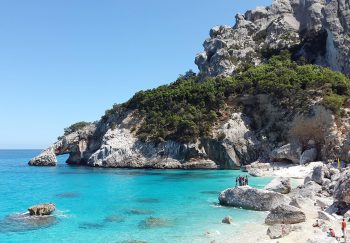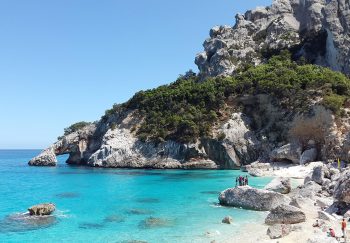The Geopark is an extraordinary universe, one of the many faces of Sicily as well as its petrified heart.
Geoparco Rota di Cerere covers more than 1,200 km, including the territory of Enna’s centre-southern region , and partially some of the protected natural regions in the same area.
Geopark is a term that refers to a place dedicated solely to the earth. This expression is actually a connection between the geology and cultural heritage of its urban areas. It tells of millennial stories, population and unexpected richness such as the deep and ancient union of geology with the mythology of the gods linked to the Earth. Demetra-Cheres, Kore-Persephone.
In memory of the place where once stood the Gods’ holy precint, it has been named Rocca di Cerere. It is located at the top of Enna’s mountain and was where the priests officiated sacred ceremonies. It looks out over a landscape that changes from time to another, with the yellow of wheat, green of oak forests, silver of olive trees, and golden ocher of medieval cities perched on its tops.
But what exactly is the geopark? Let’s begin with his geology. This is a record of a geoclimatic disaster that occurred in the Mediterranean Sea between 5 million and 6 hundred thousand years ago. The sea was completely disconnected from the Indian Ocean and the Atlantic Ocean at that point, leading to a rapid crisis that led to its destruction. It was replaced by a large sinkhole, which contained a lot of salts that had been previously dissolved in seawater. These gigantic salt caves are the Messiniane. They can be found in Sicily. White limestone mountains of different shapes, massive gypsum stratifications and sometimes crystalline.
This geology is not just a uniqueness around the world but also the narrative thread that has shaped human history in these areas.
Evaporites are the minerals that man has used to extract salt. They were the first bargaining chips, and they can be used to preserve many fruits of earth, such as cheese, and other foods. Then sulfur was born, the light of the underworld, personified by Persephone, his queen and goddess. It was already extracted at the age of bronze and became a valuable commodity in trade with the Egyptians. The founding of new countries and the opening of new roads, railways was motivated by sulfur. This is also connected to the epic of the carusi de pirrera (mines boys), such as Rosso Malpelo, Ciaula, and the protagonists of the novels of Giovanni Verga or Luigi Pirandello. These two outstanding examples of modern Sicilian literature are also influenced by sulfur.
The Rocca di Cerere, a geology which becomes one with people’s lives and also a goddess, is an immense rock that views its fields from above. She is an earthly goddess who transforms into agriculture.
If you are looking for the best places in this Geopark, which is one of the largest European Geoparks, we recommend the Floristella Mining Park and the Lake Pergusa. These two parks are part of the Rocca di Cerere. They include the Rocca di Cerere that contains the remains of the ancient Acropolis, the Medieval Castle of Lombardia, and the Nature Reserves of Valley of the Imera and Capodarso. The Rossomanno’s Woods and some natural sculptures from s and also the Mount Altesina Reserve. This was the point of the Arabs began to separate into the three Valleys: Val di Noto and Val di Mazara, Val di Noto and Val di Mazara, Val di Noto and Val di Mazara and Val di Noto and Val di Mazara, Val di Mazara, Val di Demone and Val di Noto.
Many cities were built in the region to serve the needs of princes and tyrants. Calascibetta is located around a cliff. It was inhabited from the age of copper and became a symbol for Sicilian prehistory. The Arabs later rebuilt it, as can be seen by its name. The historical centers are also here, some of which are elusive but rich in testimony: the Enna and Assoro, medieval Aidone, Piazza Armerina and the founding towns Valguarnera. Villarosa, Nissoria, Leonforte.
The extraordinary geological heritage of this area has led to the inclusion of the entire protected area in the Geopark Rocca di Cerere in the ten UNESCO World Geoparks in Italy.
